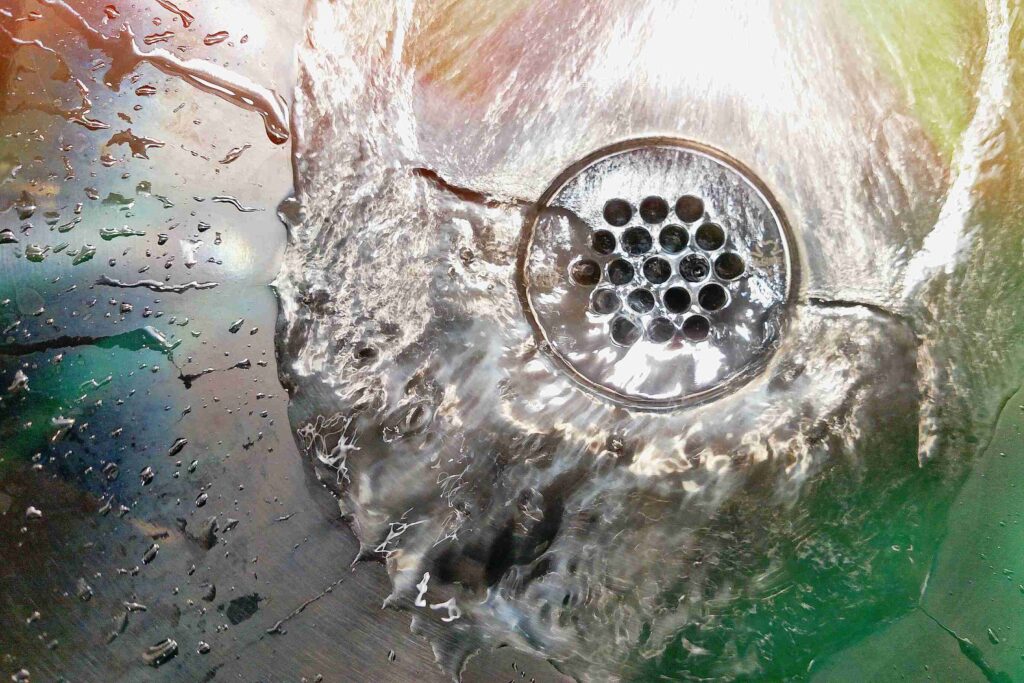
Can You Use Drano On Plastic Pipes? (Explained)
Clogged drains have a way of ruining your day fast. One minute you’re brushing your teeth or rinsing dishes, the next you’re staring at a sink full of water that refuses to go anywhere.
That’s usually when the bottle of Drano starts looking like a hero.
But then the thought hits – are plastic pipes tough enough to handle it? Or will you end up trading one problem for another?
Yes, you can use Drano on plastic pipes.
But… there’s a little more to it than just pouring it in and hoping for the best.
In this post, we’ll show you how to use Drano on plastic pipes like a PRO.
Is Drano Safe For Plastic Pipes?
Yes, Drano is safe for standard PVC plastic pipes.
Drano was designed with common household pipes in mind, and that includes PVC and other plastic types you probably have under your sink.
The chemicals in Drano like sodium hydroxide (lye) or potassium hydroxide work by breaking down gunk like hair, grease, and food scraps that block water flow. If used correctly, it won’t melt your pipes or leave you with a bigger mess.
But here’s the catch: it’s not a “the more the better” kind of product.

If you overdo it, pour too often, or let it sit in old or weakened pipes, that’s when problems start.
Also Read: Great Plumbers Putty Alternatives
How To Use Drano Safely On Plastic Pipes
If you’re going to use Drano, the goal is to get rid of the clog without causing side effects. That means being a little careful and not just dumping half the bottle down and hoping for the best.
Here’s a simple approach that makes it safe and effective.
#1 Confirm Pipe Material And Use The Right Drano Product
Most modern homes use PVC or ABS pipes. Both handle Drano just fine, but if your house is older, it might be worth checking what’s actually under there.
If you’ve got metal pipes, Drano still works, but some older systems are already fragile and more likely to corrode.
Plastic tends to be more resistant, so you’re usually good to go.
Also, Drano comes in different versions. There’s the gel, the liquid, the max-strength ones. Gel is usually the safest bet because it clings to clogs instead of just running past them.
Picking the right one for the job makes a big difference.
#2 Read And Follow Instructions
I know, reading directions feels like a chore. But when you’re dealing with strong chemicals, those little labels aren’t just there for fun. They tell you exactly how much to use and how long to wait before flushing.
Also Read: Dishwasher Air Gap Alternatives
Start by pouring the recommended amount of Drano into the drain.
Don’t use more than what it says on the bottle. Overuse can cause the chemicals to sit in the pipe longer than they should, which might lead to issues like pipe damage or unwanted buildup.
Once you’ve poured it in, let it sit for the recommended time (usually about 15 minutes, but check your specific product).
Then, flush the drain with hot water to clear it out.
#3 Use Only When Necessary
Drano isn’t something you should use all the time.
If your drain is clogged, sure, go ahead and use it. But if you’re constantly dealing with slow drainage or repeated clogs, it’s time to get to the root of the problem.
Using Drano too often can wear down your pipes. Even plastic pipes can get damaged if you’re using chemical drain cleaners too frequently.
So try to limit how often you reach for it.
If you’re constantly needing Drano, it’s a sign you should take a closer look at the condition of your plumbing or try other methods to clear the drain.
#4 Flush Thoroughly Afterward
Once the recommended waiting time is up, flushing with hot water is non-negotiable.

That step clears out the dissolved gunk along with any leftover chemical sitting in your pipes.
If you skip it, bits of residue can stick around and actually make clogs more likely in the future. Hot water also helps push everything through faster and keeps the inside of your pipes cleaner.
Picture it like rinsing soap out of your hands – you’d never just leave the suds there.
Also Read: How Much Does It Cost To Install A Toilet In Virginia?
#5 Avoid Older Or Damaged Pipes
If your plumbing system is aging, cracked, or already a little questionable, dumping strong chemicals down it isn’t doing it any favors.
Drano can sneak into weak spots and expand those cracks into leaks.
On top of that, older homes sometimes have a mix of pipe materials that don’t all handle chemical cleaners the same way.
So if you’re unsure or you know your pipes aren’t in great shape, it’s smarter to use gentler options like a drain snake or natural cleaners. A temporary fix isn’t worth creating a bigger, more expensive problem later.
Alternatives To Drano For Plastic Pipes
Sometimes you don’t want to mess with chemicals at all, and that’s fair. Luckily, there are plenty of alternatives that work surprisingly well.
One simple option is the plunger.
Not glamorous, but it gets the job done more often than you’d think. Just make sure there’s enough water to cover the cup and give it a few solid pumps.
Another handy tool is a plumber’s snake (or drain auger).
It looks intimidating at first, but it’s basically just a long coil that grabs onto clogs and pulls them out. If hair is the problem (which it usually is in bathroom sinks or showers) this tool is a lifesaver.
For a gentler, natural method, try baking soda and vinegar.
Pour half a cup of baking soda down the drain, chase it with a cup of vinegar, and let it fizz for 15–20 minutes before flushing with hot water.
It won’t clear massive clogs, but it’s great for mild slow drains and keeping things fresh.
And of course, there’s always the option to call a professional. If the clog is deep or keeps coming back, you’ll save yourself frustration (and probably some money) by getting it fixed properly.
Bottom Line
You can use Drano on plastic pipes.
Drano is safe for most plastic pipes, but overuse or incorrect use can cause damage. Always check your pipe material, pick the right product, and follow the instructions carefully.
If you don’t need Drano often and use it properly, your plastic pipes should be just fine.
But if you’re dealing with a recurring clog, it might be time to try a gentler method or get a professional to take a look.
Remember, your pipes are important, and taking care of them means fewer headaches down the road.







